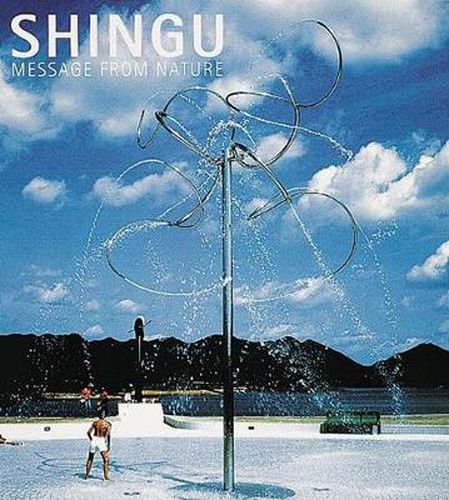Readings Newsletter
Become a Readings Member to make your shopping experience even easier.
Sign in or sign up for free!
You’re not far away from qualifying for FREE standard shipping within Australia
You’ve qualified for FREE standard shipping within Australia
The cart is loading…






Although originally trained as a painter, Shingu became interested in sculpture when he saw one of his shaped canvases turning softly in the wind. The work that followed relied on natural forces to make it move or make sound, and he began using more sophisticated materials for outdoor works. By the time of Expo 70 in Osaka, Shingu had been commissioned to create a piece for the plaza. It contained many of the elements he would use later: parts of it were moved by both wind and water, in some ways harnessing their power but also buffeted by it. His work walks the fine line between complementing nature and being an integral part of it. The pieces, though large, colorful, and usually made of modern materials, adopt natures rhythms in their movement. Shingus sculpture is found around the world, from Japan to France, Italy, and the United States. In addition to creating sculptures, he has written and illustrated several childrens books and designed several theater pieces that integrate his sculptures and installations with dramatic stories. All of these endeavors are collected here � along with the artists comments on many of the sculptures, essays by Pierre Restany and Renzo Piano, and an interview with Joseph Giovannini � in a monograph that provides a complete portrait of Shingus diverse career.
$9.00 standard shipping within Australia
FREE standard shipping within Australia for orders over $100.00
Express & International shipping calculated at checkout
Although originally trained as a painter, Shingu became interested in sculpture when he saw one of his shaped canvases turning softly in the wind. The work that followed relied on natural forces to make it move or make sound, and he began using more sophisticated materials for outdoor works. By the time of Expo 70 in Osaka, Shingu had been commissioned to create a piece for the plaza. It contained many of the elements he would use later: parts of it were moved by both wind and water, in some ways harnessing their power but also buffeted by it. His work walks the fine line between complementing nature and being an integral part of it. The pieces, though large, colorful, and usually made of modern materials, adopt natures rhythms in their movement. Shingus sculpture is found around the world, from Japan to France, Italy, and the United States. In addition to creating sculptures, he has written and illustrated several childrens books and designed several theater pieces that integrate his sculptures and installations with dramatic stories. All of these endeavors are collected here � along with the artists comments on many of the sculptures, essays by Pierre Restany and Renzo Piano, and an interview with Joseph Giovannini � in a monograph that provides a complete portrait of Shingus diverse career.